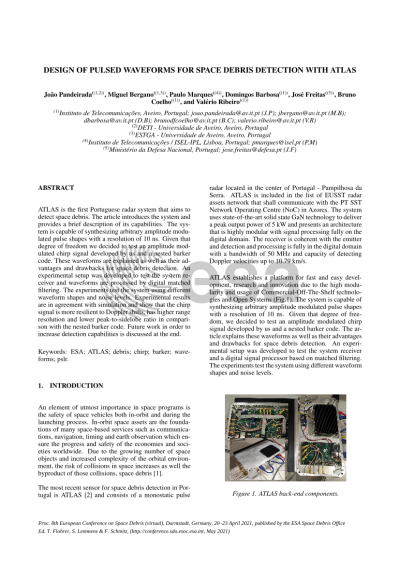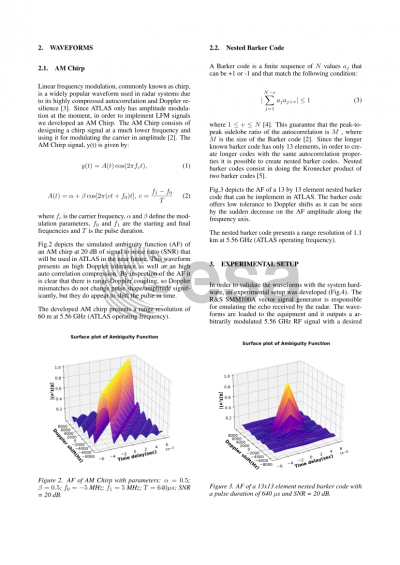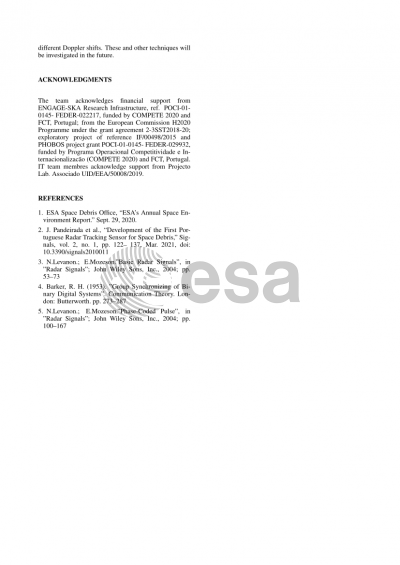Document details

Abstract
An element of utmost importance in space programs is the safety of space vehicles both in-orbit and during the launching process. The most recent sensor for space debris detection in Portugal is the IT ATLAS that consists of a monostatic pulse radar located in the center of Portugal - Pampilhosa da Serra. ATLAS is included in the list of EUSST radar assets network that shall communicate with the PT SST Network Operating Centre (NoC) in Azores. The system uses state-of-the-art solid state GaN technology to deliver the transmission power and presents an architecture that is highly modular with signal processing fully on the digital domain. IT ATLAS establishes a platform for fast and easy development, research and innovation due to the high modularity and usage of Commercial-Off-The-Shelf technologies and Open Systems. The system is capable of synthesizing arbitrary amplitude modulated pulse shapes with a resolution of 10 ns. Given that degree of freedom we decided to test an amplitude modulated chirp signal developed by us, nested barker codes among others. These waveforms are explained as well as their advantages and drawbacks for space debris detection. A signal processing chain based on a digital bank of matched filters is also present and is used to discriminate the received echo pulses. An experimental setup was developed to test the system receiver and the digital signal processor. The experiments test the system using different waveform shapes and noise levels.
Preview





